Sanchi Stupa stands inside an ancient Buddhist complex in Madhya Pradesh, situated on top of a hill in a small town called Sanchi. The complex is best known for the Great Stupa, one of the oldest stone Buddhist monuments in India. With over 2,000 years of history, it remains a living example of the art and architecture that flourished during the rule of Emperor Ashoka. The Great Stupa is a UNESCO World Heritage Site and located a short trip away from Bhopal, the capital city of Madhya Pradesh. If you are a history fanatic or an admirer of architectural brilliance, step out of your hotels in Bhopal and plan a trip to the Great Stupa at Sanchi.
Want to know more about this age-old Buddhist monument? Here is everything you should know about the Great Stupa at Sanchi, including its history, timings, architecture, entry fee, and other interesting and lesser-known facts.

Sanchi Stupa Information:
| Location | Sanchi, Raisen District |
| Type | Buddhist monument |
| Status | UNESCO World Heritage Site |
| Timings | 6:30 am to 6:30 pm; every day |
| Entry Fee | ₹30 for Indians; ₹500 for foreigners |
| Distance from Bhopal | 48 km |
| Year of Construction | 3rd century BCE |
| Commissioned by | Ashoka |
| Architectural Style | Buddhist style |
| Also Known as | Great Stupa; Stupa No. 1 (in Sanchi) |
| Dimensions | 54 feet (height) and 120 feet (dome diameter) |
| Material Used | Stone |
Sanchi Stupa: History
The Great Stupa at Sanchi, also known as Stupa No.1, was commissioned by none other than the Mauryan Emperor, Ashoka, in the 3rd century BCE. It is believed that his intention behind constructing this Stupa was to preserve and spread the Buddhist philosophy and way of life. The Great Stupa is the oldest and largest Stupa at the Sanchi Buddhist Monument Complex.
The original structure built by Ashoka was not made of stone; it was a simple hemispherical monument made using bricks. Many historians presume that the Great Stupa was destroyed in the 2nd century BCE during the reign of Emperor Pushyamitra Shunga. His son, Agnimitra, reconstructed the monument and covered the original brick Stupa with stone slabs. During the latter part of the Shunga period, additional elements were added to the Stupa and as a result, it became twice its initial size. The second and third Stupas at Sanchi were also built during this period. During the Satavahana rule, i.e. in the 1st BCE, four ceremonial gateways aka toranas and an ornamented balustrade were also added to the main structure.
Over centuries, the Great Stupa came to be known as the symbol of dharma or the Wheel of Law. This Stupa along with other structures in the Sanchi Complex was functional till the 12th century. The Great Stupa and other Buddhist monuments at Sanchi were discovered in 1818 as a result of excavations. It is currently preserved by the Archeological Survey of India.
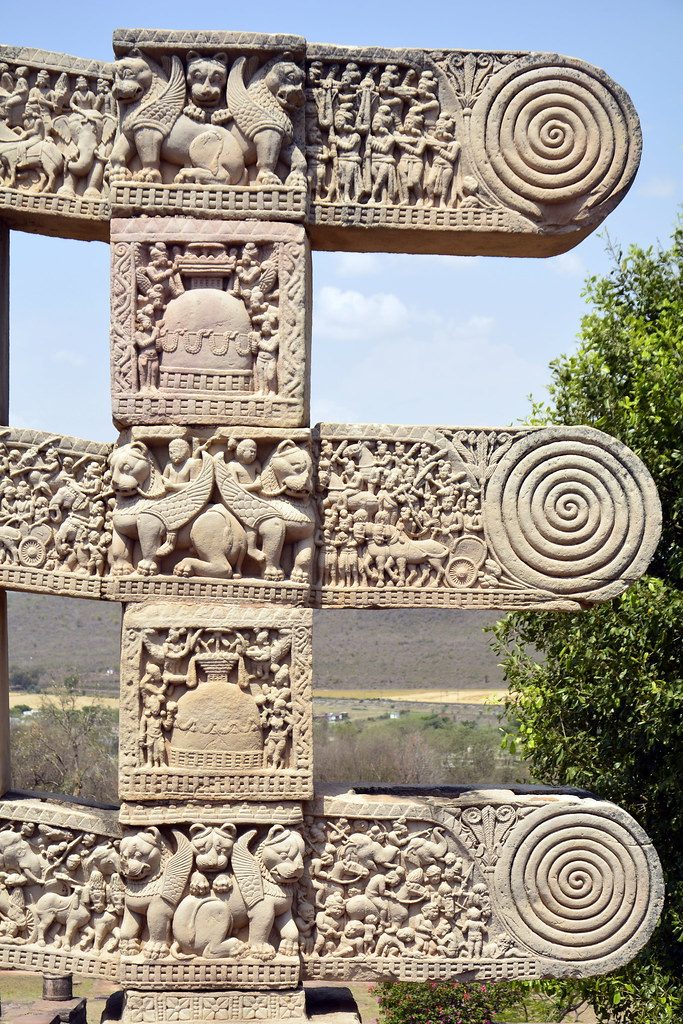
Sanchi Stupa: Architecture
The Great Stupa at Sanchi exhibits the Buddhist architectural style. With a height of 54 feet and a pedestal diameter of 120 feet, it is one of the largest of its kind in the whole country. The main structure of the Stupa is a hemispherical dome that has a simple design. The dome rests on a base, under which is a relic chamber. According to popular beliefs, the dome was constructed over the relics belonging to Lord Buddha. That is why it was adorned with three chhatris (umbrella-like structures) meant to shelter the relics. The three structures are said to stand for Triantha or the three jewels of Buddhism, namely the Buddha, the Dharma, and the Sangha. A large central pillar supports the chhatris.
The railings surrounding the Great Stupa are devoid of any artistic décor. These railings are nothing more than plain slabs bearing dedicatory inscriptions. There are four intricately ornamented ceremonial gateways that face all four directions. Scenes from Jataka stories, events of Buddha’s life, scenes from early Buddhism period, and several auspicious symbols are carved on these ceremonial gateways.
Sanchi Stupa: Today
Today, the Great Stupa at Sanchi is one of the most famous tourist spots near Bhopal and a prominent Buddhist pilgrimage site. Scores of people visit this structure every day to get a glimpse of the region’s architectural heritage and to understand the cultural history of India at a deeper level. Currently, you can see around fifty additional structures and monuments on the hilltop where the Stupa is situated.
In 1989, the Great Stupa and other Buddhist structures at Sanchi were collectively declared a World Heritage site by UNESCO for their unique cultural significance.
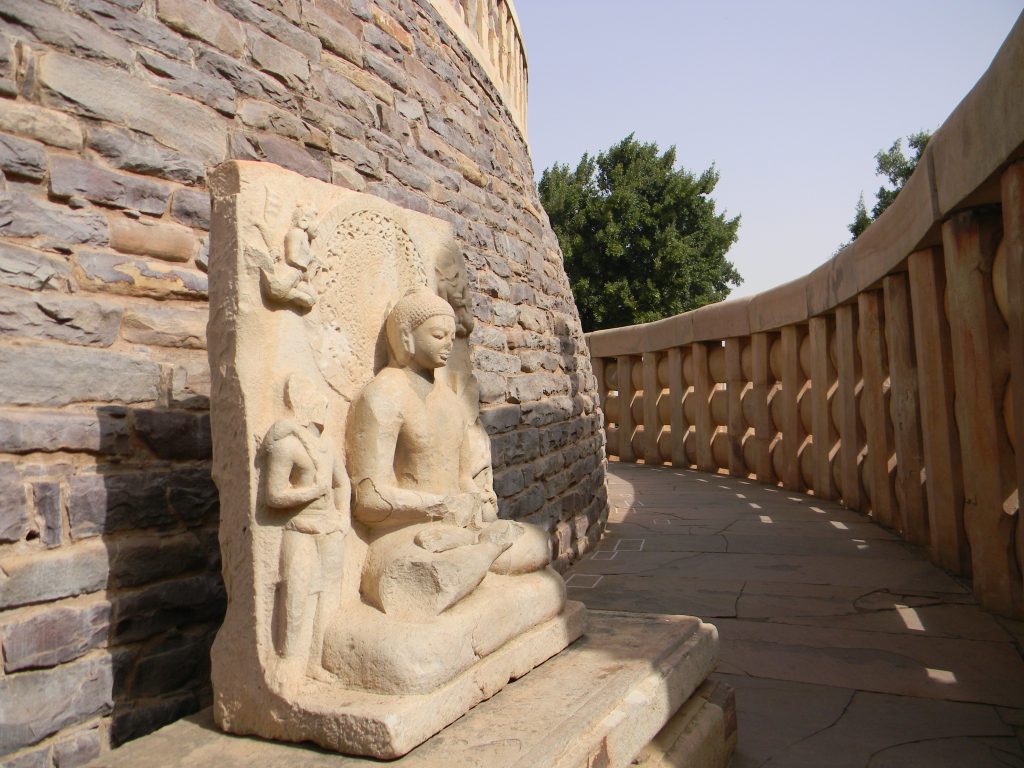
The Great Stupa at Sanchi has been the focal point of the Buddhist faith in the region since it was built by Emperor Ashoka in the 3rd century BC. The grand structure still inspires awe today and sits at the top of a hill, surrounded by the remains of smaller stupas, monasteries, and temples that were built as the religious community grew in the centuries after the site was founded.
Despite its impressive scale today, the original Ashokan stupa was about half the size and built from large bricks and mud mortar. It’s believed it had raised terraces at the base, was enclosed by a wooden railing, and was crowned by a stone umbrella. The stupa was enlarged using local sandstone during the Sunga period, which began about 50 years after Ashoka’s death. The elaborately-carved gateways were added later, in the 1st century BC.
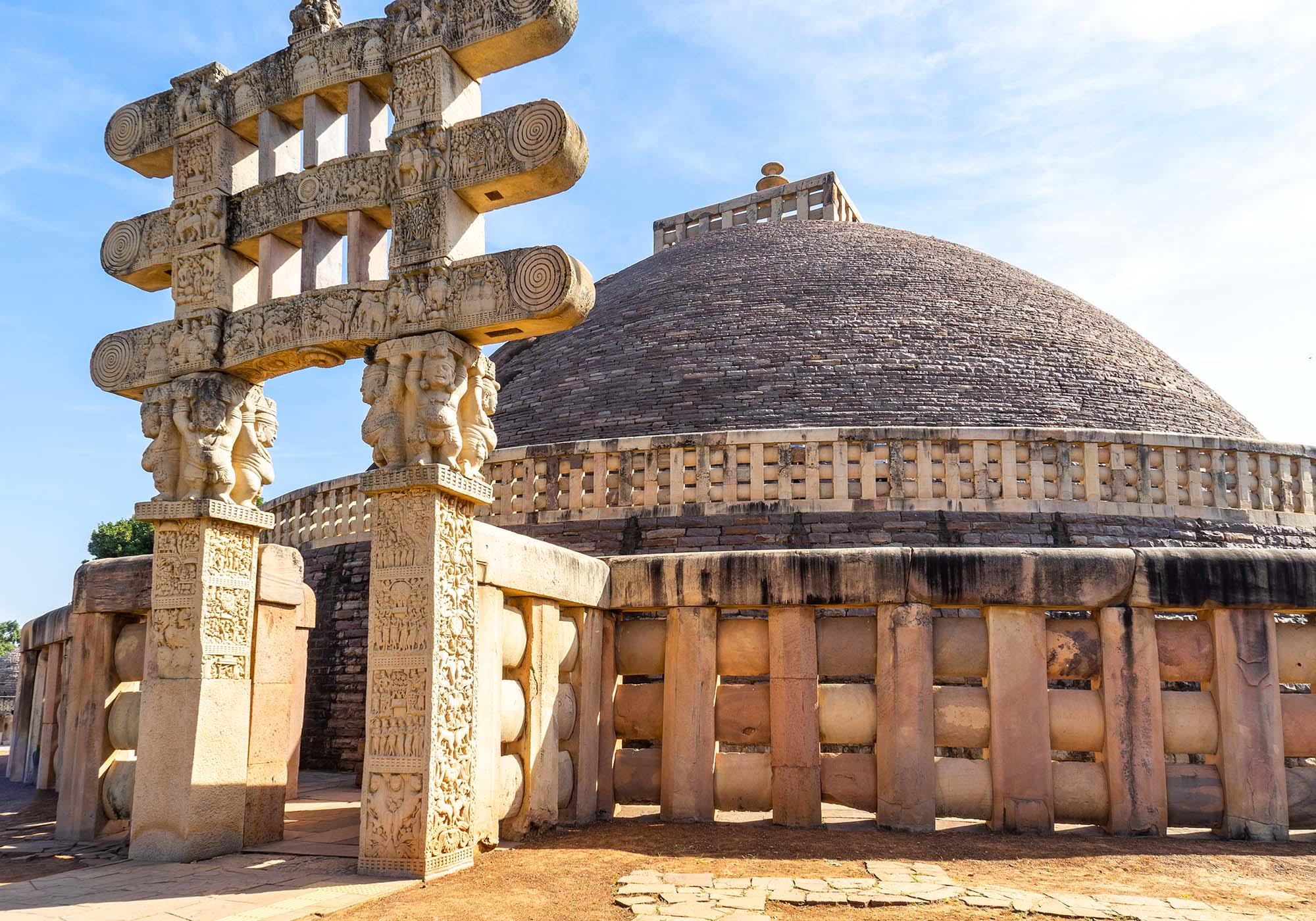
The main body of the stupa symbolises the cosmic mountain. It is topped by a ‘harmika’ to hold the triple umbrella, or ‘chhatraveli’, which represents the three jewels of Buddhism – the Buddha, the Dharma, and the Sangha. The high circular terrace against the base is accessible by staircases and is designed for worshippers to be able to walk around the stupa. On the ground level, there is another procession path that is surrounded by stone balustrades.
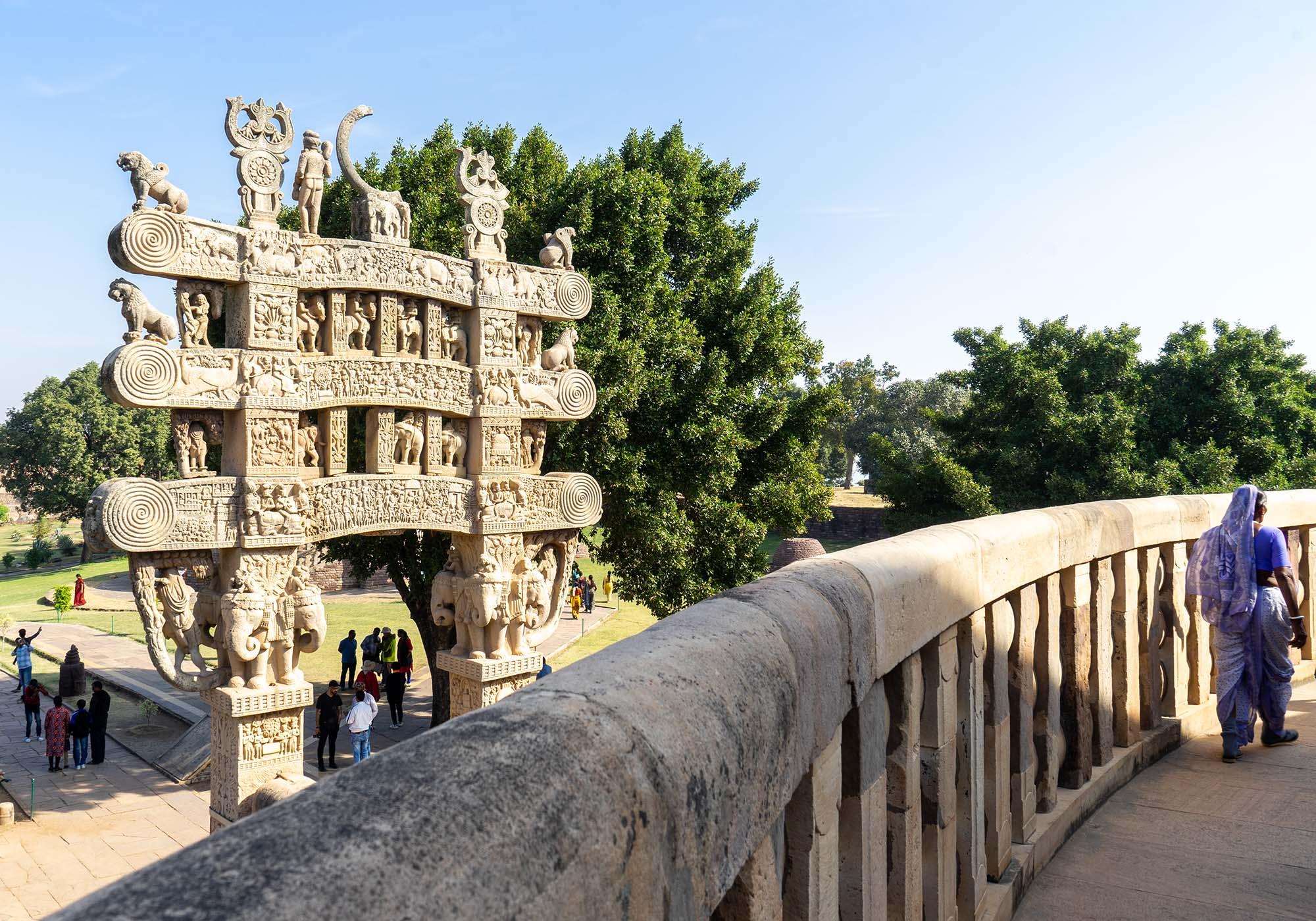
The gateways at the four cardinal points are the highlights of the structure, with a series of detailed carvings showing Buddhist symbols and important historical and religious scenes. Interestingly, Buddha is always shown in these carvings as a symbol and not as a human. He is represented on the gateways as a horse without a rider, an umbrella above an empty throne, the Bodhi tree, or as footprints.
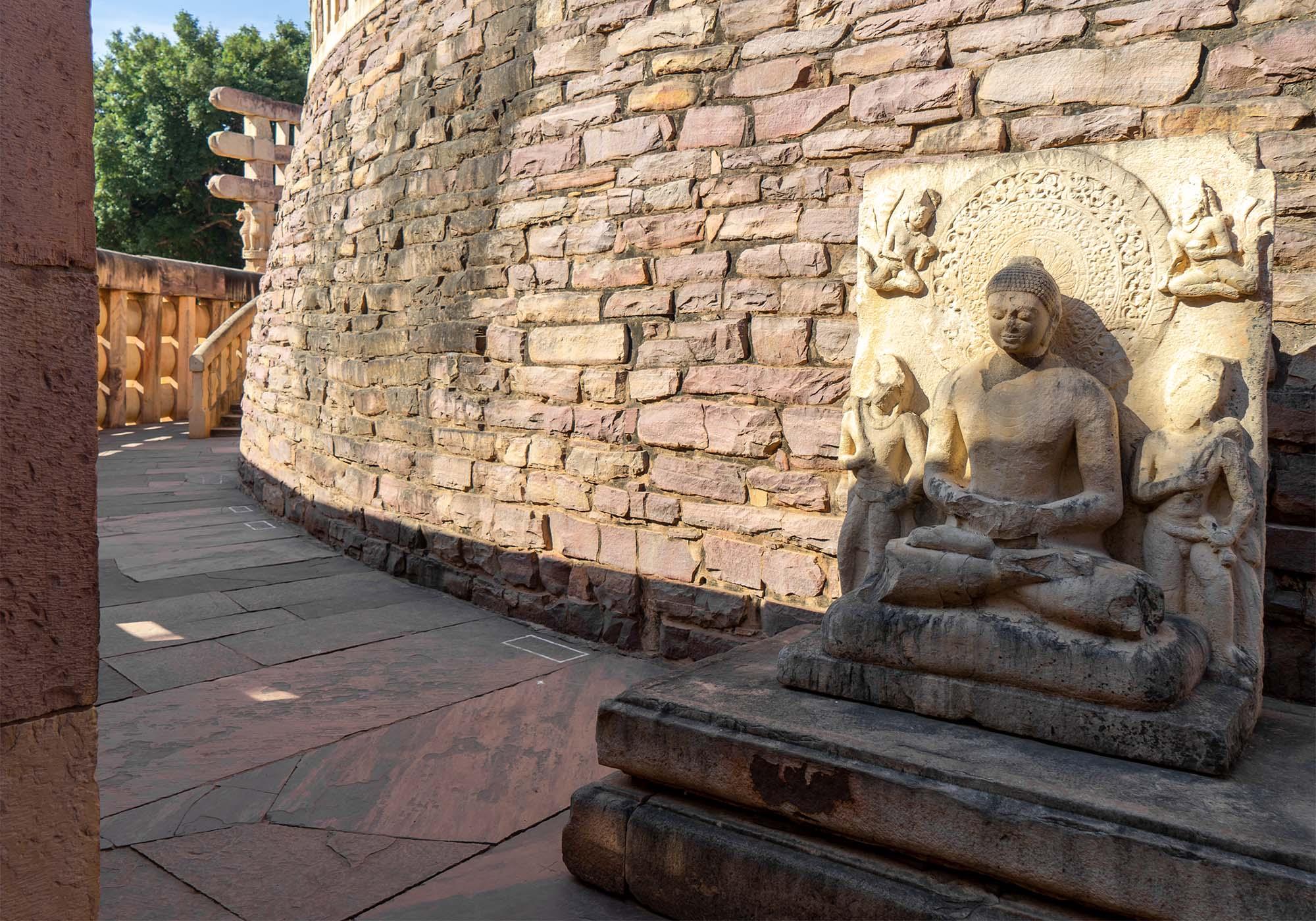
Through each of the gateway entrances is an image of Buddha in human form seated under a pillared canopy. They were added to the site in the 5th century AD, much later than the rest of the stupa’s decorations, as the worship continued here. It’s yet another demonstration of the endurance of devotion that Emperor Ashoka created at Sanchi.
Sanchi Stupa Timings
The Sanchi Stupa opening hours are from sunrise to sunset.
Sanchi Stupa Location
Sanchi Town, Raisen District, Madhya Pradesh 464661
Sanchi Stupa Opening Days
The monument complex remains open on all days of the week.
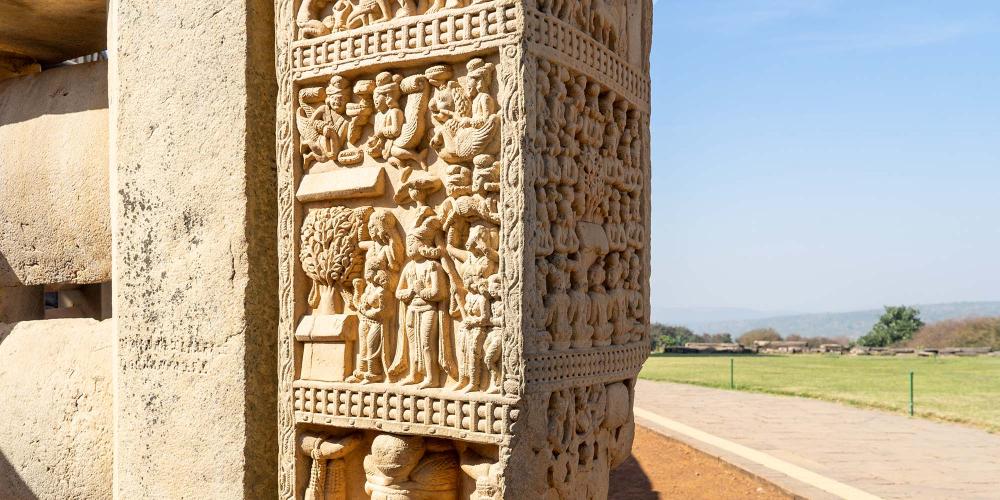
How to Reach Sanchi Stupa
Being at a short distance from Bhopal, most visitors prefer to hire a cab to get to the Stupa complex, as this is the fastest and most convenient way of getting to Sanchi from the state’s capital, Bhopal.
| Nearest Airport | The Raja Bhoj Airport |
| Nearest Metro Station | NA |
| Nearest Railway Station | The Sanchi Railway Station |
| Nearest Bus Stand | Bhopal Bus Stand |
Nearest Metro Station to Sanchi Stupa
A metro rail connectivity for Bhopal is on the cards, therefore, currently this service is not available in Bhopal, or in the town of Sanchi.
Nearest Bus Stand to Sanchi Stupa
There are several buses plying from Bhopal bus stand, which is about a kilometre from the Bhopal Junction railway station, that take you to Sanchi in roughly an hour. Such a bus stops at a point on the road which has an information board on how to get to the Stupas complex. From there, the UNESCO World Heritage Site is a brief walk away.
Nearest Railway Station to Sanchi Stupa
The Sanchi railway station is a small railway station, about 1.5 kilometre from Sanchi Stupa. There are a few passenger trains and a couple of long distance trains that have a brief halt here. However, if you are coming by rail, it is best to take a train to Bhopal Junction as it is well-connected to the rest of the country with a decent train network that includes five pairs of Rajdhani Express, two pairs of Shatabdi Express, Garib Rath Express, Duronto Express and several Express and passenger trains. The New Delhi Bhopal Habibganj Shatabdi Express 12002 originates here and is among the fastest trains in the country covering Delhi – Agra – Gwalior – Jhansi – Bhopal/Habibganj.
Nearest Airport to Sanchi Stupa
The Raja Bhoj Airport in Gandhi Nagar, Bhopal, is the closest airport to the Sanchi Stupa, about 55 kilometres away. From the airport you can hire a taxi that will bring you to the heritage site in under an hour and a half. The Bhopal airport is a domestic one with great connectivity to Delhi, Mumbai, Ahmedabad, Hyderabad, Raipur, Shirdi, Jaipur and Bangalore. Some popular airlines operating out of here include Air India, IndiGo, SpiceJet, Jet Airways and Alliance Air.

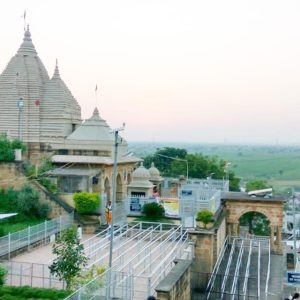
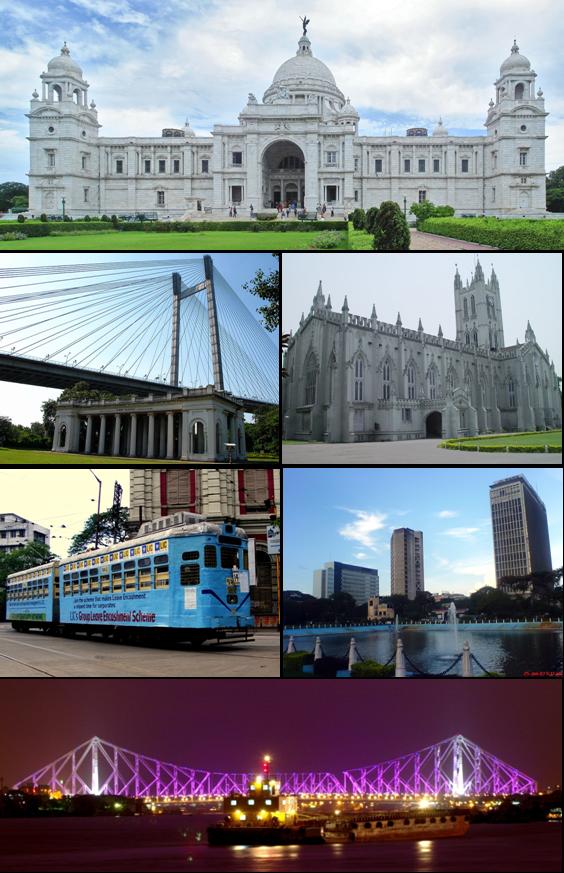
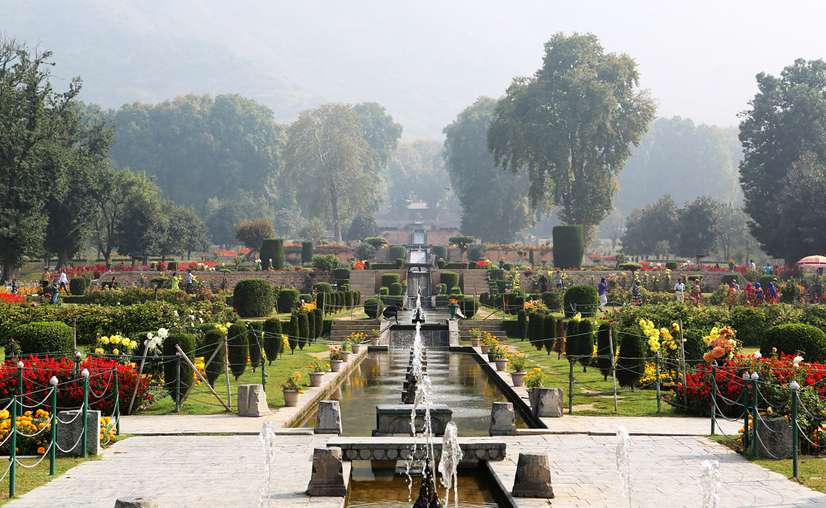
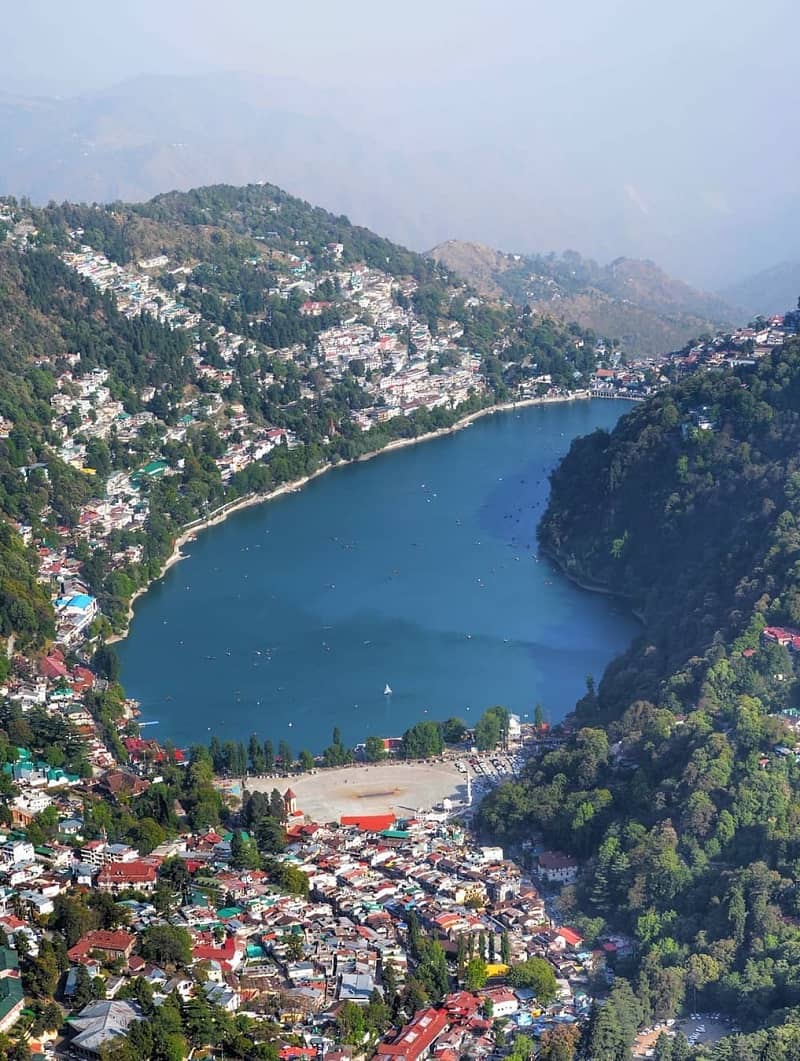

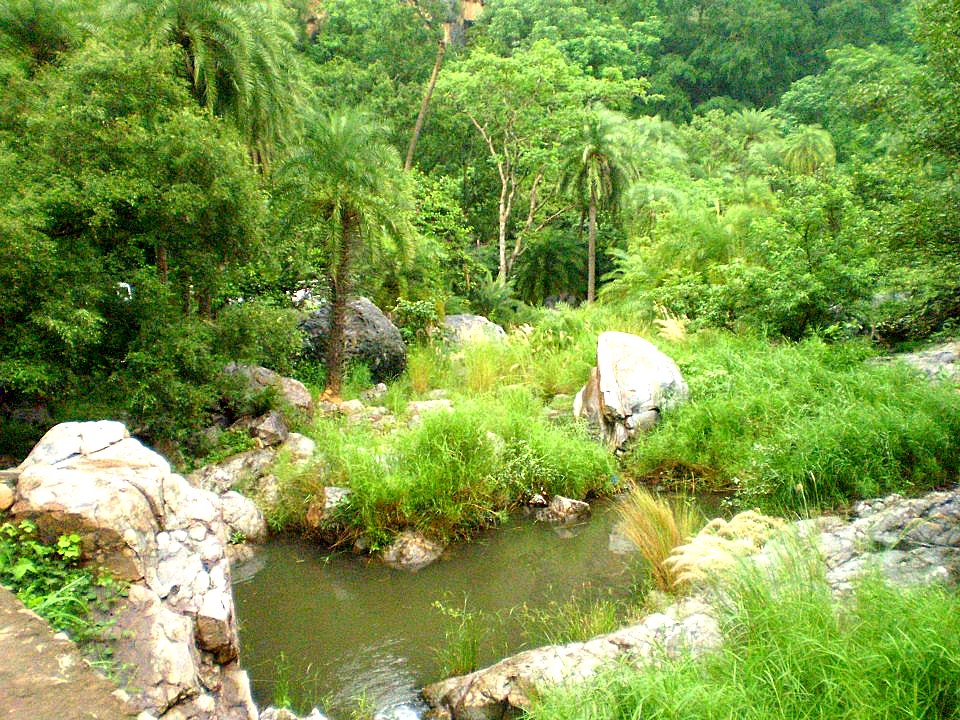
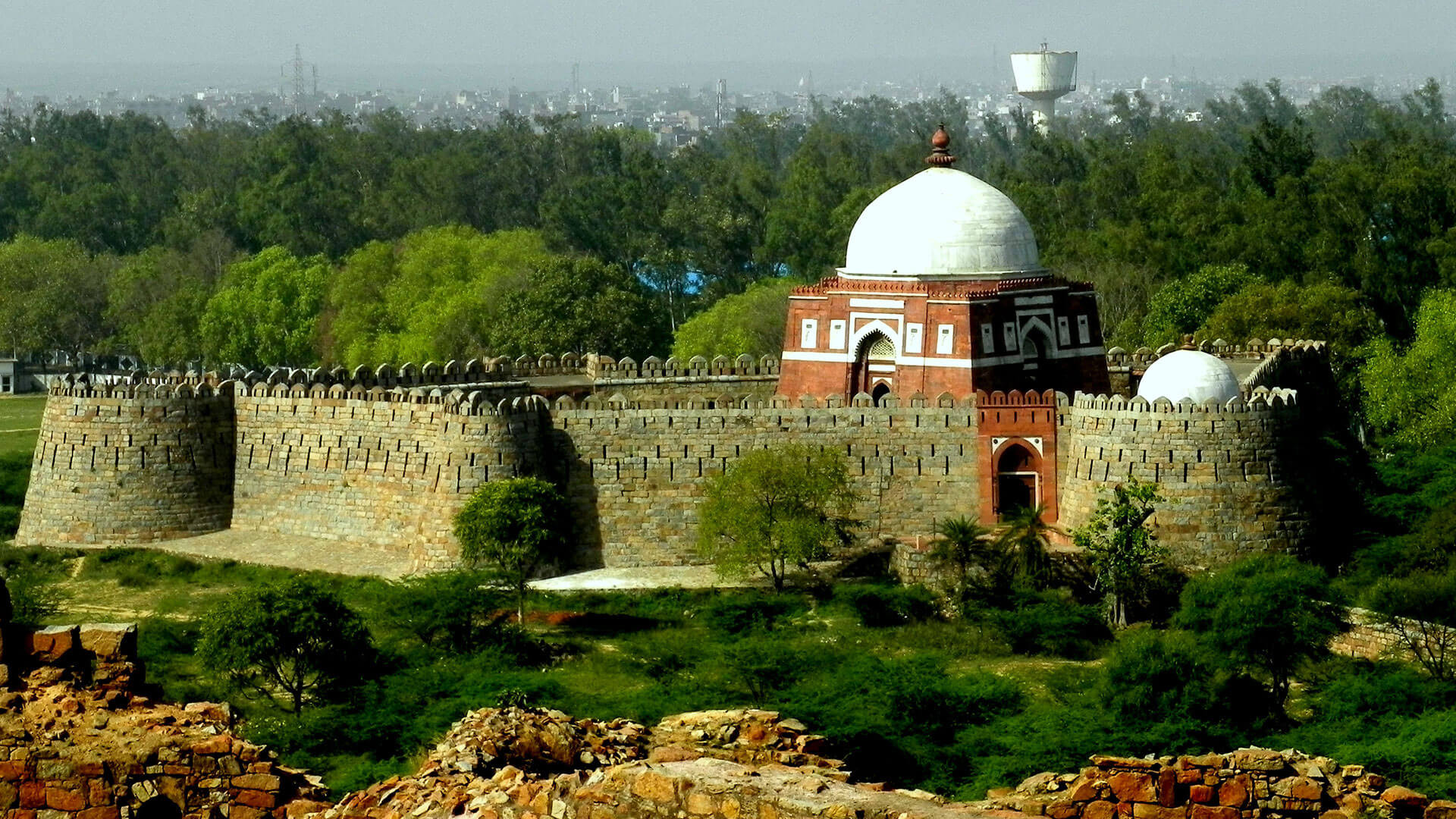
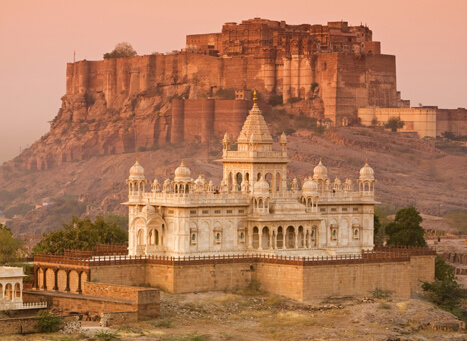
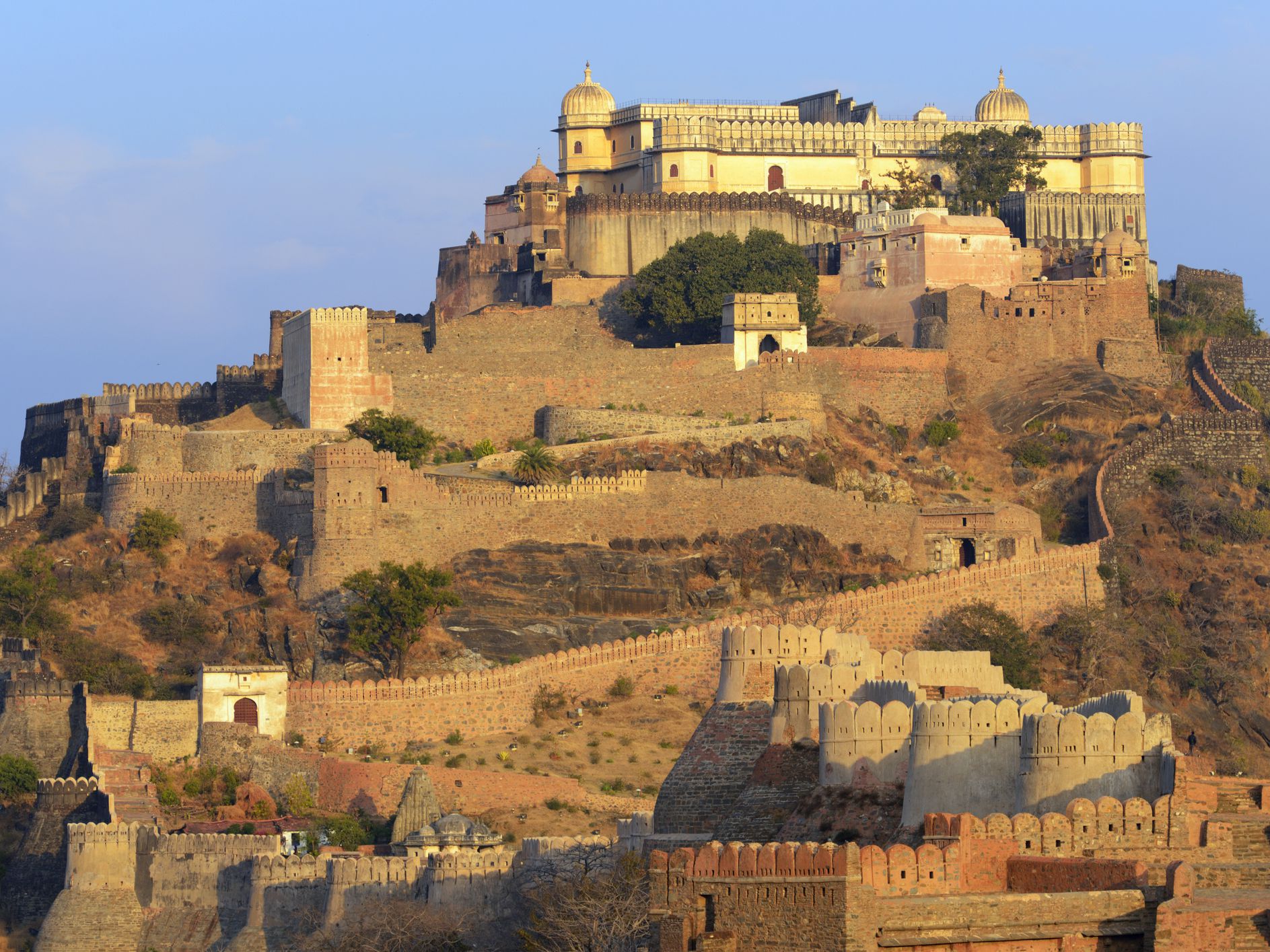
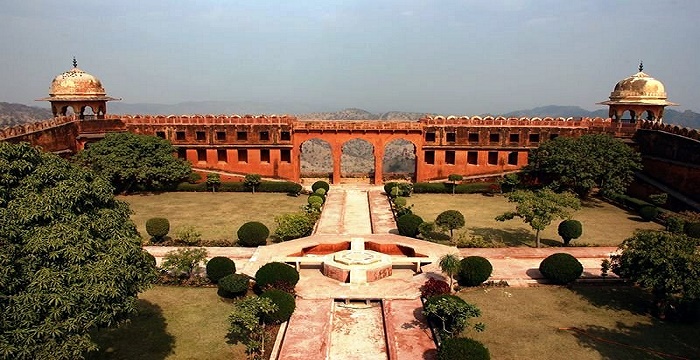


3 Comments
Comments are closed.